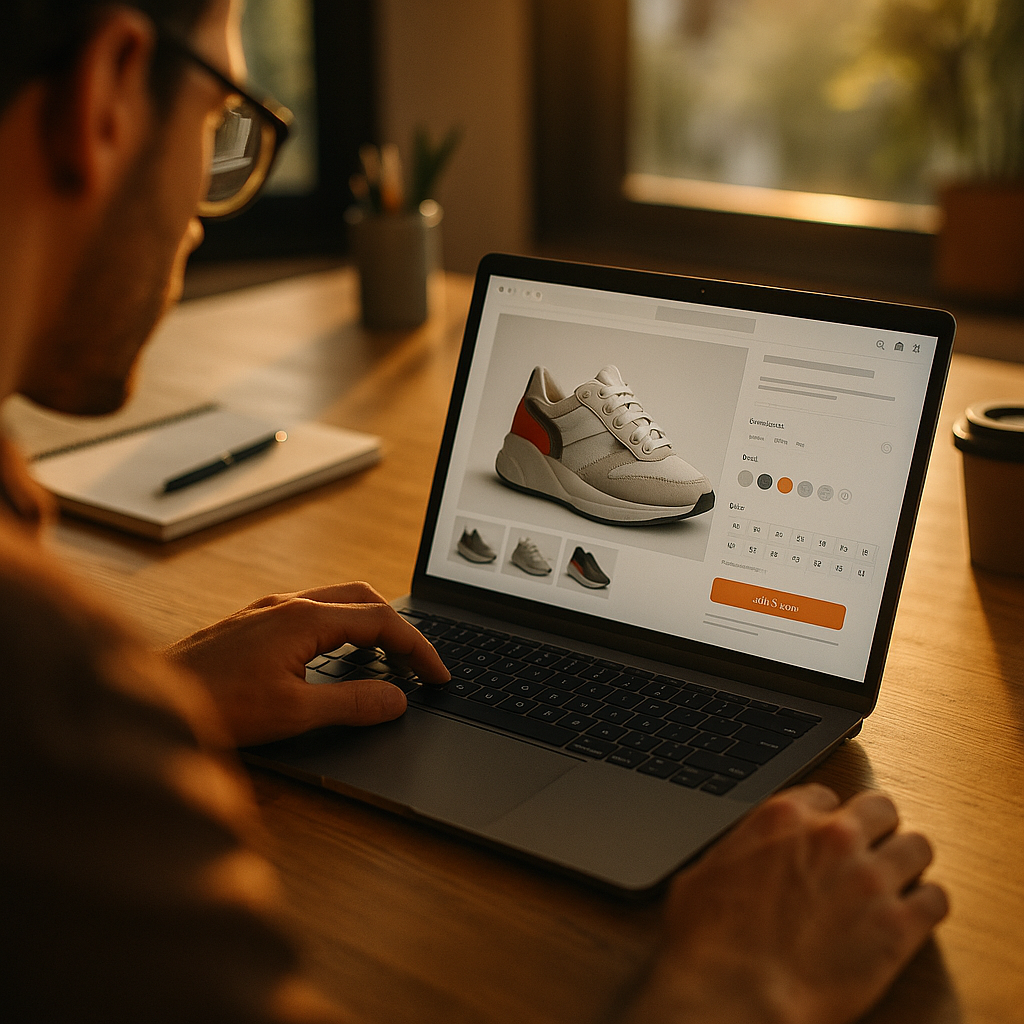A high-converting B2C e-commerce product page can transform browsing visitors into loyal customers, driving growth in 2025’s competitive online space. If you want to maximize revenue and stand out from the crowd, understanding the essential elements of these powerful product pages is critical. Ready to optimize your store and boost conversions?
Optimized Product Images: Creating Visual Magnetism
Your product images are the most persuasive elements on a B2C e-commerce product page. High-resolution, professionally shot images that offer multiple angles and zoom functionality engage shoppers and reduce uncertainty. According to Shopify’s 2024 research, over 75% of customers consider product images pivotal in their purchase decision.
- Multiple Angles and Lifestyles: Showcase products from various perspectives and in real-life scenarios.
- 360° Views and Video: Short product demo videos and interactive 360° spins allow shoppers to inspect details virtually, mimicking in-store experiences.
- Consistency: Keep image style consistent for brand recognition and a professional look across all pages.
By investing in quality visuals, you build trust and reduce barriers to purchase, directly impacting conversion rates.
Persuasive Product Descriptions: Speak to Your B2C Buyer
A compelling, well-structured product description builds credibility and addresses buyer needs. Leverage your brand’s voice, but focus on clarity, benefits, and direct answers to likely questions.
- Highlight Unique Value: What sets this product apart? Show how it solves the shopper’s problem or fits their lifestyle.
- Scannable Formatting: Use bullet points, short paragraphs, and bold headings to improve readability on mobile devices, which saw over 70% of purchases in early 2025.
- EEAT for Trust: Incorporate details that reflect expertise (materials, sourcing), experience (use cases, stories), authority (awards, certifications), and trust (clear policies).
Answer common buyer questions before they’re asked, addressing sizing, compatibility, care instructions, and more to reduce cart abandonment.
Conversion-Driven CTAs and Seamless Add-to-Cart Experience
Your call-to-action (CTA) is the critical trigger for conversions. In 2025’s fast-paced e-commerce climate, your add-to-cart and buy-now buttons must be clear, prominent, and frictionless.
- Button Visibility: Use contrasting colors and sufficient spacing so CTAs stand out instantly on any device.
- Descriptive Text: Swap vague phrases (“Submit”) for high-intent cues (“Add to Cart”, “Get It Today”).
- Urgency and Social Proof: Real-time cues like “Almost Gone” or “In Demand” tap into FOMO, while customer purchase notifications build trust.
- Mobile Optimization: Simplify quantity selection, use one-click purchases, and minimize distractions during checkout.
Remove obstacles: enable guest checkout, offer simple forms, and support diverse payment options to accommodate all user preferences and boost completion rates.
User Reviews and Social Proof: Building B2C Trust
In a landscape shaped by consumer skepticism, authentic customer reviews and social proof heavily influence purchasing decisions. Integrating a robust review system on your product page aligns with Google’s EEAT focus in 2025—showcasing experience and trustworthiness.
- Quantity & Quality: Display ample recent reviews, highlighting both positives and respectfully showcasing resolved issues.
- User-Generated Content: Encourage buyer photo uploads and testimonials for greater authenticity.
- Trust Badges: Showcase return policies, warranties, or data security certifications to reassure hesitant shoppers.
Feature review summaries or star ratings at the top of the page, and allow filtering by rating or topic to streamline the experience and improve usability.
Technical SEO and Page Performance: Foundation for Success
High-converting pages aren’t just visually attractive—they must be discoverable and lightning-fast. In 2025, Core Web Vitals continue to influence rankings and bounce rates according to Google’s own published recommendations.
- Fast Load Times: Optimize images, use lazy loading, and leverage a content delivery network (CDN) to ensure pages load in under two seconds.
- Mobile Performance: Ensure responsive design and smooth mobile navigation—especially critical since most B2C buyers shop from smartphones.
- Structured Data: Use schema.org markup for product, price, and review data to help products appear in Google’s rich results and increase click-through rates.
Regularly test your product pages using PageSpeed Insights and Search Console to diagnose and correct bottlenecks swiftly.
Frequently Asked Questions
-
What elements increase B2C product page conversions the most?
Persuasive images, scannable product descriptions, clear CTAs, user reviews, and mobile optimization have the largest impact on conversion rates, based on top e-commerce reports from 2025. -
How do I improve trust on my product page?
Integrate customer reviews, testimonials, and trust badges. Share detailed return policies and display secure payment logos for added confidence. -
Is video content necessary on product pages?
While not mandatory, product videos boost engagement, showcase benefits, and often lead to higher sales. For high-ticket or complex items, video is particularly effective. -
How can I make my product pages mobile-friendly?
Use a responsive design, compress images, prioritize one-click actions, and minimize on-page clutter, especially around forms and CTAs. -
How do product page reviews affect SEO?
Search engines favor fresh, user-generated content. Verified reviews with product schema help you appear in rich snippets, driving more qualified traffic.
High-converting B2C e-commerce product pages demand a blend of engaging visuals, clear messaging, trust signals, and technical excellence. By focusing on these core elements—optimized images, persuasive content, seamless UX, and strong social proof—you position your store for success and sustained growth in 2025 and beyond.
